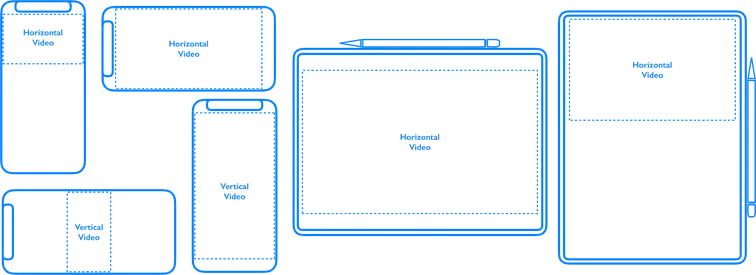Why video presentations?
Video is the most interesting and engaging way to share an idea with others - Chad Hurley, Co-Founder of YouTube and Warriors investor.
It has been shown that video is the fastest way to share information when compared to the alternatives, i.e., static reports, slides, and dashboards. Video displays non-verbal content well, engages audiences, presents content concisely and in a rich manner, incites action, enhances communication, and has the widest market reach. For example, video outperforms images in advertising based on engagement.

What are Cast video presentations?
Cast videos are ultralight vector videos driven by data and AI. They have several advantages over traditional bitmappened videos. They aren't recorded using a video camera. They generated from data. And are simply code and data and therefore offer the highest degree of per-end-user personalization possible.
How are Cast videos different from traditional videos?
1000% smaller
Since Cast videos are vector videos their size is a fraction of the size of traditional videos. Consider this, an uncompressed 1080p video is 150MB per minute. Higher resolutions have larger size, as show for some select devices.
Cast videos in comparison are few 100 KB.
That means, Cast videos are suitable for 1:1 hyper-personalization. John's Cast video would be very different from Mary's.
High text-level compression
The traditional video format is very resource inefficient. Streaming video at fixed formats of 720p, 1080P or 4K video, has relied on highly compressive encoding during creation and hardware support for resolution scaling and decompression during decoding. Also, the video has to be specifically encoded for each of the resolutions and orientations. User interfaces on our computers, phones, and tablets, take full advantage of native screen resolutions, but we still scale videos because of these resource requirements.
The Cast video underlying format is text, making is even far more compressible during storage and transmission.
That means, Cast videos load immediately and do not require separate video players to be downloaded.
Cheap to distribute
To reach the audiences globally and without considerable lag, a traditional video has to be distributed over content distribution networks (CDNs). CDNs usually have to store copies of the same video, adding to the cost, for various resolutions, i.e., for mobile, desktop, low-bandwidth, high-bandwidth, etc.
Cast videos also use CDNs for instantaneous download and playback, but the small size makes then much cheaper to distribute.
Native support for accessibility
Traditional video cannot adapt to color blindness. This is particularly important when choosing a palette of colors for a chart. Here is an example of “Red-Green confusion color blindness” and how it appears to a person whit this deficiency.

Cast videos can be generated with different colors for different people.
Resolution and orientation agnostic
Traditional video has to be generated for different resolutions and orientations. Various resolutions are usually downsampled from a master and distributed to various platforms.

Movies have been created with varying movie aspect ratios, ranging from 4:3 (Academy aperture), to 15:9 (European 35mm), to 16:9 (letterboxed), to 20:9 (70mm), to 21:9 (CinemaScope and Panavision), to 25:9 (Cinerama). They are retrofitted onto screens using horizontal and vertical black bars.

Cast videos are interactive and personalized
Traditional videos offer limited inteactivity, limited to "hotspot" links to external media, ability to branch within various positions in the video, and basic HTML overlay form input. Personicom, SundaySky, and several companies offer recorded video with HTML element form element overlay for interactivity and personalization. Using branching, it is possible to skip segments of video or show them in a different order, however, the entire video has to be included in the payload.
Cast Videos have native branching and are hyper personalized, down to the narration, spoken and displayed language, scene, and colors. A Cast video can be personalized for every person you want to reach by their role and preferences.
